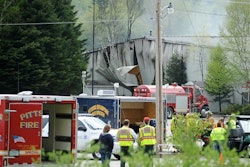This is the final installment of a three part series looking at important changes in chemical management. Parts one and two examined recent changes to OSHA’s Hazard Communication Standard, including adoption of the Globally Harmonized System (GHS) and an upcoming training deadline for employers with hazardous chemicals in the workplace. This final chapter covers chemical management best practices and the ways technology and cloud computing have revolutionized chemical management.
Note: OSHA refers to the new HazCom Standard (post GHS alignment) as HazCom 2012. It refers to the old HazCom Standard (pre GHS alignment) as HazCom 1994. This article does the same.
A Chemical Timeline
In order to appreciate where we are today, it’s helpful to understand the evolution of chemical compliance. Prior to 1970, chemical management was nearly non-existent. Then came OSHA and the EPA, setting the United States on a path toward greater workplace safety and environmental conscientiousness. In 1983, OSHA promulgated the Hazard Communication Standard (HazCom and HCS) and along with it a set of responsibilities for chemical manufacturers, distributors and employers.
In the early years, chemical management consisted primarily of manufacturers providing safety data sheets to downstream users and putting labels on containers. Those safety data sheets were put into binders by employers and employees were given access to them. The DOT and the EPA also have some simple requirements.
Today, chemical management is a large umbrella that covers a range of activities and regulations, including but not limited to:
- Maintaining facility specific HazCom programs
- Tracking chemicals and quantities at the ingredient level across organizations
- Providing real time safety data sheet access to employees in diverse work locations
- Employee training
- Tier II Reporting
- Regulatory reporting against hundreds of local, state, federal and international lists
- First Responder coordination
- Transportation, storage, disposal and HazMat considerations
- Chemical substitution and greening of the supply chain
In short, the range of activities those participants in the lifecycle of a hazardous chemical are expected to engage in have grown exponentially over the last 40 years — to the point where many chemical manufacturers, distributors and employers are out of compliance with some or much of their obligations.
One could easily blame this on the proliferation of rules and regulations. On the other hand, it could also be argued that some of the blame falls on those organizations for failing to adequately update their chemical management practices. While it is true that companies are expected to do more these days, it is also true that technology has done an admirable job keeping pace with compliance responsibilities.























